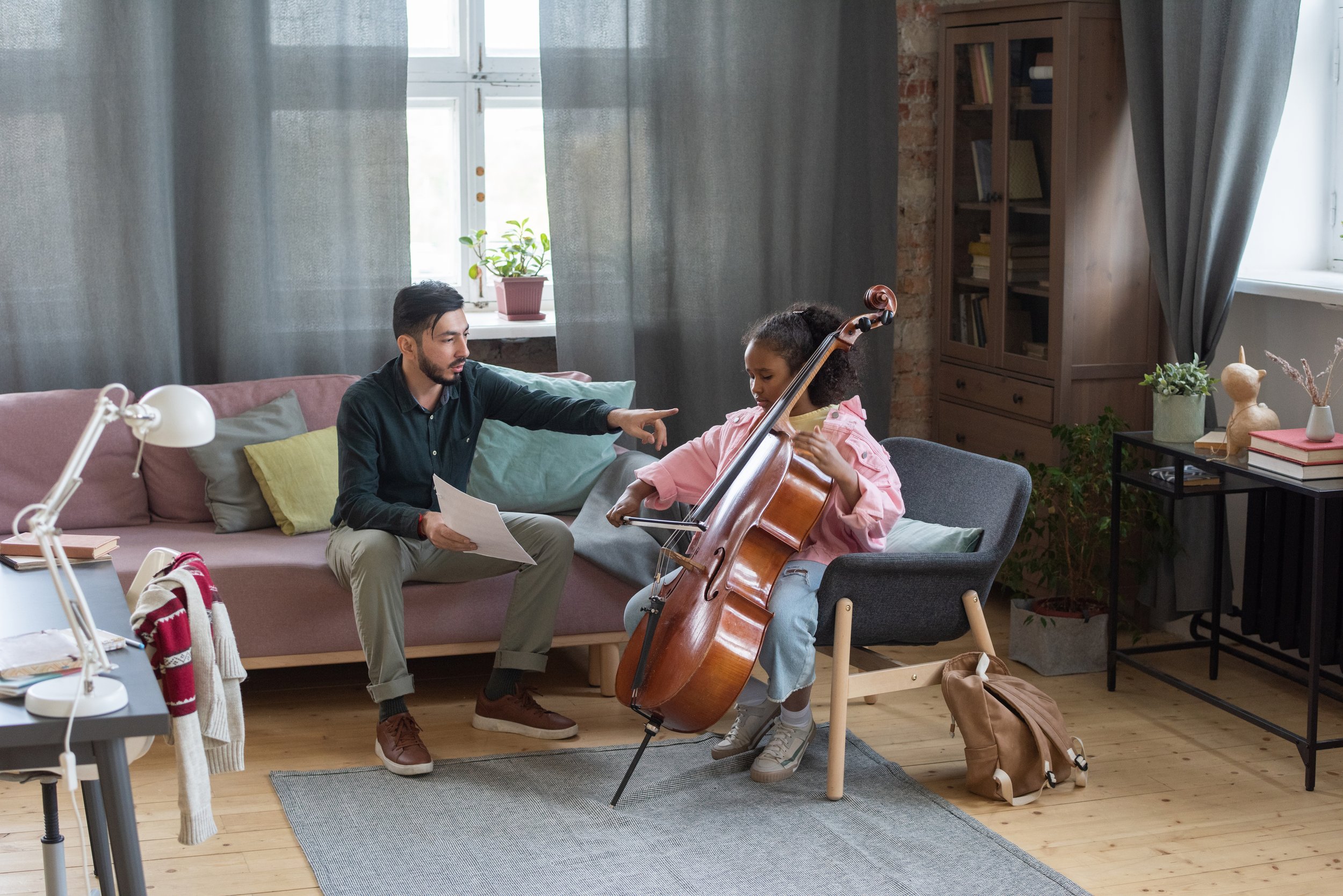
Adopting a Student-Centered Teaching Approach in the Private Studio
Park, M. H. (2022). Adopting a Student-Centered Teaching Approach in the Private Studio. American String Teacher, 72(1), 23–25. https://doi.org/10.1177/00031313211064787
-
Overview
Adopting a student-centered teaching approach in the private studio encourages studio teachers to focus more on the values of individual students. Every studio teacher’s physical/pedagogical setting, educational mindset/approach, and experiences varies. When studio teachers recognize and acknowledge the same contexts/experiences of their students, teachers can better address the musical needs of their students.
-
Know Your Students
Park suggests uncovering students’ musical identities with questions such as, “What kind of music is meaningful to you? Aside from your private lessons, how has music been present in your life? What are your musical interests?” (2022, p.23). Making small talk or discussions about musical activities in and outside of schools can reveal additional musical activities that students are interested in, such as: singing in choirs, collaborating in school musicals, and students musical genre preference.
-
Repertoire Selection
“Music educators can empower their students by giving them more authority in choosing content/repertoire and how they may want to learn their instrument” (Park, 2022, p. 24). Park highlights repertoire selection as a way for teachers to recognize students’ cultural identity. Pop music interest can be a powerful way to connect students’ current musical understanding/experiences to the broad spectrum of music.
-
Alex's Riff
Park encourages studio teachers to include students in the learning process through student-centered practices. When it comes to repertoire selection, the discussion about selecting repertoire within students’ technical ability is not mentioned, but the bigger picture in this article leaves it up to the student to make that decision through self-directed exploration and perhaps a discussion with the teacher. This is what I find quite empowering about Park’s approach. As a string teacher, I feel compelled to match students with repertoire that is challenging enough to bring students’ musical performance to the next level, but attainable and within students’ technical reach. Park cites a critical question of Wayne Bowman (2009), “Are [teachers] meeting the needs of their students, parents, and the broader community, or are they serving the needs of music teachers, the schools’ habitual practices, and the music education establishment? Has string pedagogy become formulaic because of tradition?”